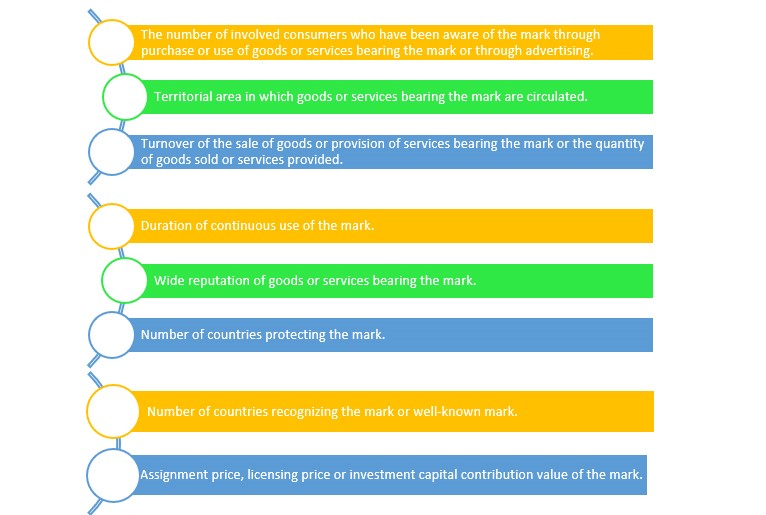
Vietnam Stepping Up its Game by Introducing 11 Remarkable Changes to its Trademark Laws
Trademark as all business practitioners know is a form or medium of protection for every business owner’s brand that indicate its ownership and it serves as commercial indications of goods and services of that business owners and trademark without doubt certainly plays major role in economic scene of every country. Vietnam in order to promote growth in its economic scene locally and internationally, has introduced 11 significant changes to its trademark laws. National Assembly of Vietnam on 16th June 2022 has passed the Third Amendment to the 2005 IP Law and this has replaced both the 2009 First Amendment to the 2005 IP Law and the 2019 Second Amendment. (For the purpose of this article, we will refer the Third Amendment to the 2005 IP Law which is recently passed by the National Assembly of Vietnam as “2022 IP Law” for reading convenience.)
Vietnam being one of the members to new-generation free trade agreements including the Comprehensive and Progressive Agreement for Trans-Pacific Partnership (CPTPP), European Union–Vietnam Free Trade Agreement (EVFTA) and Regional Comprehensive Economic Partnership (RCEP), has introduced the 2022 IP Law in furtherance of compliance with the agreements and international commitments. In this article we will discuss on the 11 important changes to the trademark laws in Vietnam.
1. Well-known Mark
Article 4.20 of IP Law of Vietnam (“IP Law”). has introduced a new definition of “well-known trademark”. A well-known trademark means the trademark is widely known by the relevant sectors of the public in the territory of Vietnam. This new definition is modified not only to satisfy provisions on protection of well-known trademarks imposed on the international agreements signed up by Vietnam but also to fulfil the eight criteria for recognition of well-known marks discussed under Article 75 of the IP Law. To further understand the definition of well-known mark, it is best if we discuss the 8 criteria as mentioned here. The 8 criteria of well-known marks can be seen as follows:-

The 2022 IP Law further adds that the recognition of a trademark as well-known trademark shall be determined on several or all of the 8 criteria mentioned above and the point of time when the earlier trademark has become well-known or famous shall take place before the filing date of an applied-for trademark.
2. Sound Marks are Registrable but with a Condition
The new 2022 IP Law is very interesting as the National Assembly of Vietnam decided to add sound marks to be registrable only when if the sound marks have the same distinctiveness as visible signs. This is discussed further in Article 72.1 of the IP Law, “trademark is a visible sign in the form of letters, words, pictures, figures, including three-dimensional shapes or a combination thereof, represented in one or more colors or is a sound sign represented in graphical representation.”
The keyword here is the sound sign shall be represented in graphic. Thus, to apply for registration of a sound mark, the reproduction of an applied-for mark required an audio file along with a graphical representation of such sound.
3. Grounds of Refusal of 3D (Three-dimensional) Trademarks are Added
One of the notable importance in 2022 IP Law is when the new law includes grounds for refusal of registration applicable to 3D marks. This is because, a 3D mark solely contains of a three-dimensional shape that are spontaneously arising from the goods or merely consist of the shape of the commodity necessary for obtaining their technical effects thus making the 3D mark to be excluded from protection and registration. Not only that the 3D mark contains shape of the commodity to be deemed as lack of distinctive character, but the generic configuration of the goods, or the common configuration of the packaging which has been used continuously before its filing date shall be considered as non-distinctive and therefore is not registrable.
4. Zombie Trademark Conflict
Earlier expired trademark that is used as ground for refusal of later filed trademark is known as zombie trademark. The new 2022 IP Law has introduced a new time limit for preventing the later filed trademark from protection which is shortened to 3 years instead of 5 years under the old law. Therefore, one of the significances is a trademark applied for registration must be refused if it is identical with or confusingly similar to another person’s trademark which has been registered whereby the registration certificate of which has been expired for no more than 3 years.
5. Provisional Suspension of Trademark Examination
Previously, the old law did not allow any suspension of examination. However, the new 2022 IP Law introduced that the law allows for applicants to file a request to suspend examination of such rejected trademark so that the applicant may proceed to invalidate any previous trademarks. This is such a notable change as it gives a right to the applicant to ensure that their application is fairly examined.
6. Provisions on Complains and Settlements are Introduced
Vietnam has further introduced Article 119a whereby it discusses on complaints and settlement of complaints in industrial property procedures such as applications for establishment of rights, renewal, amendment, termination of validity, or cancellation of validity of trademark registration. However, it is important to note that only those who have direct interest and rights to the trademarks are allowed to initiate lawsuits or complain. It is worthy to note that the time for re-examination in this clause, or the time for amendment and supplementation, are not included in the time limit for the settlement.
7. Two Mediums are Introduced for Trademark Opposition
This probably the most important change in the IP Law whereby not only third party’s written opinion is used as a reference source for examining a trademark application, but the Vietnam National Assembly seek to develop an additional mechanism to oppose the trademark application as an independent new opposition procedure. Here, it gives liberty towards any third party to file an opposition to a trademark application within 5 months since the publication date of the application.
8. Additional Legal Grounds are Introduced to Oppose Trademarks due to “Bad Faith”
Vietnam in 2022 IP Law legalizes the act of “bad faith” as legal ground to allow a third party opposing a trademark application. In addition to that, 2022 IP Law highlights other legal grounds to refuse protection of marks such as applicant’s lack of right to register, trademark registration application has been revised or modified which has changed the nature of originally filed trademark, or two identical or similar trademarks applying for registration filed by 2 different entities and both have met the requirements for protection but the 2 entities could not come into consensus to withdraw either one of those applications.
9. More Legal Grounds to Terminate Validity or to Cancel Validity of trademarks
Vietnam really stepped up their game by strengthening their laws in introducing another 2 grounds for termination of validity of a registered trademark in the 2022 IP Law. The grounds are firstly, such registered trademark has become the common name of goods or services bearing the mark, and secondly, the use of protected trademark for goods or services by the owner of the mark mislead the consumers as to the nature, quality or geographical origin of such goods or services.
10. New Definitions of Use of Trademark and Parallel Import
The new 2022 IP Law defines acts of selling, offering for sale, advertising, displaying, storing for sale, transporting goods bearing a protected trademark as one of the acts of use of a trademark.
The new law further states that the act of parallel import includes the circulation, importation and exploitation of the utility of a product has been put into the market including foreign market by the owner or its licensee, and this includes the transfer of right to use or whoever has the right of prior use.
11. Counterfeit Trademark Goods
National Assembly of Vietnam in the 2022 IP Law has expanded the scope of determining acts of production and sale of counterfeit trademark goods, specifically acts of forging stamps and labels containing signs identical or similar to the extent that it is difficult to distinguish from the registered trademark used for the same item bearing the mark without the consent of the owner.
In conclusion, it can be seen in the points above that Vietnam has expanded its scope in the definition of trademarks, the introduction of new marks and at the same time strengthen its legal process by adding more legal grounds and pleads to give even more protection to the registered trademarks.
